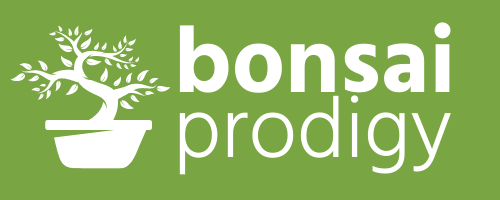Can Any Tree Be A Bonsai Tree?
Who doesn’t want to go outside the norm and create something that no one else has?
And, bonsai is an art form, so why not get creative with it?
But, can just any tree be a bonsai?
Overall, yes.
You can cultivate any tree or bush species with a woody-type stem into a bonsai tree.
However, you should remember that all species have specific care requirements that you will need to uphold to create a healthy and aesthetically pleasing bonsai tree.
Read on to find out which tree species are best for bonsai and where to grow them.
Are Bonsai Trees Just Dwarf Trees?
First off, to understand which trees work the best as bonsais, you need to know what a bonsai is.
And contrary to popular thought, bonsai trees are not dwarf versions of full-sized tree species.
Instead, people cultivate bonsais from the cuttings of full-sized trees.
They just trim and prune them to maintain a small size.
Bonsai enthusiasts do this by growing their tree in a small pot so that the roots (and therefore the foliage and tree) stay tiny.
In fact, “bonsai” literally means “planted in a small container.”
For this reason, you can make a bonsai tree out of any shrubs or trees.
How to Find a Suitable Species for Bonsai
Traditionally, people grew bonsai trees to look like miniature replicas of larger trees.
Thus, gardeners often choose tree species with small foliage or needles, so the proportion of the tree looks right when grown in miniature.
So, if you want to grow a ‘proper’ bonsai, you will need to consider the type of leaves that a tree will produce.
You should also think about whether you want to grow your tree in a particular style.
For example, some trees, such as pines, tolerate pruning well, and you can easily shape them to look old or gnarled.
Other trees may not accept much pruning, though, so you may not be able to get the style you want with certain plants.
Additionally, you should know that some species of trees are hearty, so you can easily use them for bonsai.
However, others require more maintenance, skill, and experience.
So, whatever species you are considering growing into a bonsai tree, make sure you do some research on what growing conditions it will need.
Can I Grow Fruit, Flowers, or Herbs as Bonsai?
Yes.
Since almost any tree or shrub can be a bonsai plant, you have many possibilities, including apples, roses, rosemary, azaleas, and even bamboo.
Fruit Trees for Bonsai
Crabapple, citrus, olive, and pomegranate are common fruit trees used in bonsai.
Yet, in most cases, while the leaves on a bonsai become smaller over time, the fruits these trees produce may be closer in size to those of a regular-sized tree.
Thus, fruit might throw off the proportion of your tree a little since it won’t look exactly like a miniature replica of a fruit tree.
However, growing any type of food is always exciting, so many people decide to give it a go.
Herbs for Bonsai
You can also grow all types of herbs, provided they have some type of woody stalk.
Herbs you can grow as bonsai include rosemary, thyme, oregano, lemon verbena, lavender, and tarragon.
And you can use these herbs in cooking since they are just as edible on bonsais as on the standard plant.
Flowering Trees for Bonsai
Flowering trees will continue to flower even if grown as bonsai.
Therefore, you can grow flowering cherry and apricot trees, as well as jasmine and magnolias.
Are Bonsai Trees Grown Indoors or Outdoors?
Traditionally, bonsai trees were grown outdoors in the same growing conditions as full-size versions.
Yet, outdoor growing is somewhat limiting for bonsai enthusiasts who live in cold climates or want to grow a range of bonsai from various climate zones.
Also, some bonsai, such as the juniper, do not thrive indoors, and you must leave them outside year-round.
Yet, you can grow many subtropical species, such as the ficus, Chinese elm, and Carmona, indoors all year.
But, you will need to place them in a spot with lots of bright light.
Additionally, some exotic trees, such as bougainvillea, will require sun and warm temperatures in the summer but will need to winter in cool but not freezing temperatures (under around 60℉/15℃ ).
And these conditions may be challenging to maintain in most households.
So, consider these issues before picking a tree.
Finally, if you need to grow your bonsai indoors for part or all of the year, make sure you have the space to do so with appropriate light and away from hazards such as pets.
Thus ultimately, whether you should grow your tree indoors or outdoors depends on the species and the climate in your area.
What Bonsai Species Are Best For Beginners?
If you are just starting out, you might want to try a ficus, dwarf jade, or juniper.
These trees are hearty, unfussy, and grow well as bonsais.
Overall, ficus trees are probably the simplest, and you can easily grow them indoors as long as you have bright light.
Additionally, they only require watering when the soil is dry, meaning they’re great for people who are a bit on the forgetful side.
Also, their branches are flexible and easily clamped to achieve a particular shape.
Dwarf jade trees are also an excellent choice for beginners because they have smaller leaves than regular jade trees, making them perfect for bonsai.
They don’t require too much water either, but they do need direct sun.
Conclusion
You may be worried you can only grow bonsais from certain tree species, but that’s not true.
With the right skills and conditions, you can make just about any tree, shrub, or bush into a bonsai.
Table of Contents
